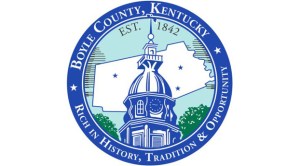Still standing, still serving: 160 Years of the Advocate-Messenger
Published 1:10 pm Tuesday, June 24, 2025
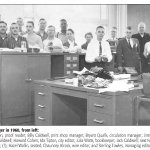

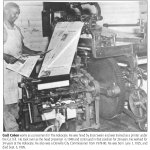
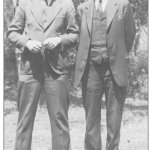
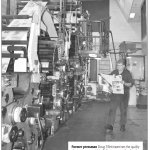
By: Casey Roberts and Josely Labarrere
Staff Reporters
What began in 1865 as a weekly four-page paper run on hope and ink has, 160 years later, become one of the most enduring pillars of journalism in Kentucky. The Advocate-Messenger—born of mergers, editorial feuds, technological revolutions, and shifting reader loyalties—has not only chronicled the pulse of Boyle County, it has shaped it. And if the past century and a half is any indication, it’s not slowing down.
The Advocate is born
Danville’s long print legacy officially began on June 24, 1865, when James R. Marrs rolled out the first edition of The Kentucky Advocate. A Civil War veteran of the newspaper world, Marrs had cut his teeth working for his brother-in-law at The Kentucky Tribune. But Marrs saw an opening—literally and figuratively—after the war: Danville needed a new voice. So he took a gamble and launched his own paper with a mission to cover politics, agriculture, home life, and what he called “choice miscellany.”
His instincts proved correct. Business and civic life in Danville were shifting. The city, scarred yet eager to grow after the war, welcomed Marrs’ paper as both chronicler and participant. An 1899 reflection on Marrs called him “a God-fearing, neighbor-loving Christian gentleman” and “one of the best country editors of his time.” From the outset, the paper bore the Kentucky state seal and proudly wore the slogan: “A weekly journal devoted to politics, news of the day, the farm interests, home matters, and choice miscellany.”
Originally priced at $2.50 per year for a weekly issue (though Marrs had flirted with the idea of a semi-weekly at twice the rate), the Advocate grew in both size and stature. Marrs himself stepped away in 1885 to become Danville’s postmaster and later founded The Central Record in nearby Lancaster.
What followed was a parade of editors who would shape—and sometimes clash over—the voice of the paper. Among them was Samuel G. Boyle, grandson of Chief Justice Boyle (for whom the county is named), who handed off duties to Craig Ralston within just two years. Business manager H.E. Woolfolk stuck around longer and was later elected mayor in 1906—a role not uncommon for newspaper men of that era.
Trending
A town of papers
By the early 1900s, Danville wasn’t just a one-paper town. In fact, it was crowded with print voices. The Advocate found itself in the company of competitors like The News and The Herald, as well as an emerging rival: The Danville Messenger.
The Messenger was the brainchild of Hubert McGoodwin, a merchant and city treasurer who was reportedly insulted by how the Advocate had portrayed his handwritten budget report as being scrawled on “butcher paper.” So, McGoodwin did what any self-respecting businessman with wounded pride would do—he went to Cincinnati, bought a linotype machine, and came back with his own newspaper.
This local rivalry ushered in a golden age of small-town press drama. The Advocate retaliated by transitioning from weekly to daily print (skipping Sundays), becoming one of the smallest daily publications in the nation at the time. Just three years later, the paper joined the Associated Press wire service—further expanding its reach.
A series of failed mergers
By 1918, The Messenger had found firm footing under new owner J. Curtis Alcock, who transformed it into a daily by the following year. Alcock hired talent like Charlie McDowell (future dean of law at Washington & Lee University) and J. Sterling Towles, who would later jump ship to work at The Advocate-Messenger.
Still, attempts at unity were rocky. In July 1925, the two papers flirted with alternating daily publication schedules. The public didn’t like it—at all. Merchants complained about duplicated advertising costs, readers didn’t want to switch allegiances midweek, and after just three days of backlash, both papers resumed full operations.
This failed merger didn’t stop another attempt just a few months later, in November of that same year. This time, the Advocate would run daily while the Messenger returned to weekly print—at least for a week. The plan fell apart quickly.
A short-lived peace
The November 1925 trial run was intended to bring harmony between the two newsrooms—but it lasted only seven days. On Nov. 9, The Messenger resumed daily publication, with editors issuing a blunt admission: “We promised to publish a bigger and better daily newspaper in Danville… and after a week’s trial we found that we could not get the support needed to publish the kind of papers we had in mind.”
Thus, the print war resumed—two daily newspapers, just a stone’s throw from one another near the corner of Fourth and Main, vying for scoops, subscribers, and supremacy.
The 1930s only intensified the rivalry. The Great Depression gripped the country, and in Danville, it fueled an editorial battle. The Advocate, under the bold hand of W.V. Richardson and W.O. Mclntyre, often leaned into sensationalism. Their stories were dramatic, embellished, and sometimes fabricated for effect. A now-legendary 1930 tale from The Advocatetold of “two ravenous timber wolves” slaughtering sheep in Parksville and Mitchellsburg. A 200-man posse was said to be on their trail. The story took up a significant portion of the front page—and while its factual basis was questionable, its ability to sell papers was not.
In contrast, The Messenger adopted a more sober, community-focused tone. But that didn’t mean it was humorless. One infamous day, when editor J.C. Alcock left his staffer Charlie McDowell in charge, he instructed him to place an eight-column headline over the day’s biggest story. Upon returning, Alcock discovered this stretched across the front page: “There’s not any news in Danville today.”
Despite the chuckles, there was no mistaking Alcock’s professionalism. His attention to both editorial quality and business management helped The Messenger survive the lean years and, ultimately, paved the way for a final union.
One voice at last
In 1940, after decades of rivalry, the inevitable happened. Backed by local investor J.S. VanWinkle, Alcock orchestrated the merger of The Kentucky Advocate and The Danville Messenger. The new combined entity became The Advocate-Messenger, a name that reflected both papers’ legacies. The merged daily ran Monday through Friday, while Sunday editions preserved the historical name, The Kentucky Advocate.
Just two years later, Alcock passed away. His place as editor was filled by Enos Swain, a calm, steady presence who would lead the paper through the war years and into the modern era. Swain remained at the helm until 1978. During his tenure, he guided the newsroom through labor shortages, technological change, and expansion.
One particular wartime hurdle came in 1943, when the shop foreman was drafted. A notice ran apologizing to readers for delayed issues and explaining that the paper had temporarily become a morning edition to allow the overworked skeleton staff more time to prepare each day’s news.
During those lean years, one staffer stood out above the rest: Ida M. Tipton. Known for her speed, accuracy, and grit, Tipton was described by colleagues as “equivalent to three or four men.” She covered everything—politics, society news, courtrooms, even sports. Her work ethic was foundational to the paper’s survival and success during WWII and beyond.
Building toward the future
In 1963, The Advocate-Messenger took a bold step into the future by becoming the second daily newspaper in the state to adopt offset printing. This move dramatically increased printing speed and quality, enabling the paper to serve a broader region. Coverage expanded to five surrounding counties, and circulation steadily climbed—to 12,000 daily and 13,000 on Sundays.
In 1977, the Schurz family of South Bend, Indiana, purchased the paper, integrating it into Schurz Communications. Mary Schurz became publisher and editor, and just a few years later, in 1985, the paper moved to its new home at 330 South Fourth Street.
The paper that once chronicled the fading gunfire of the Civil War now found itself covering the Cold War, space shuttles, Watergate, and the rise of home computers. It had survived everything from wolves (real or invented) to war drafts, from rivalries to recessions.
Legacy in ink
Every anniversary marks more than just years in operation—it marks generations of stories told, lives chronicled, and communities served. The Advocate-Messenger has done more than report the news; it has reflected the identity of Danville and Boyle County, evolving with the people it serves while holding true to its founding values.
Over the decades, the paper has been a proving ground for local journalists and editors who would go on to leave their own mark on Kentucky and beyond. Names like George A. Joplin Jr., who would later become publisher of the Somerset Commonwealth, and Charlie McDowell, remembered as much for his legal mind as his sharp editorial wit, were part of the Advocate’s early chapters. Their commitment to the written word was foundational to the credibility and longevity of the publication.
By the time the paper celebrated its 125th anniversary in 1990, it had firmly entrenched itself as the region’s leading news source. Through the voices of Enos Swain, Ida Tipton, and Chauncey Alcock, among many others, the Advocate-Messenger had built a reputation for fairness, integrity, and relentless local coverage. It stood as both a mirror and a molder of public life—engaging in civic debates, challenging local government, celebrating local victories, and mourning local losses.
As former editor Enos Swain once put it, “Much success was due to the tireless efforts and brilliant work” of the staff. And while journalism across the country has undergone immense transformation—marked by digital shifts, social media, and industry consolidation—the soul of the paper remains intact.
The paper in modern times
In recent decades, The Advocate-Messenger has had to adapt like never before. It has faced the same existential questions as every paper of its size: how to balance tradition with innovation, how to retain loyal print readers while reaching digital natives, how to keep local journalism alive amid shrinking budgets and changing media habits.
Despite these headwinds, the paper continues to operate with the same mission it had in 1865—serve the public, tell the truth, and never underestimate the power of a local story well told.
The name on the masthead has changed. The technology has changed. The staff has changed. But the essence of the Advocate-Messenger has endured.
It still publishes obituaries with care, investigative reports with rigor, school board meetings with clarity, sports wins with pride, and human interest stories with compassion. It still shows up, five days a week in print and daily online, to deliver what no outside media outlet ever could: the truth of this town, in this moment, for these people.
It still listens.
It still asks questions.
It still looks upward—and onward.
A community’s paper
As Danville continues to grow, to shift and reshape itself with the times, the Advocate-Messenger stands ready. It has told the story of this town for 160 years—not just through headlines and photos, but through generations of readers and writers who called it their own.
It told of the first brick laid on Main Street. It reported the arrival of the train. It covered wars, weddings, harvests, floods, festivals, feuds, and heroes.
And now, on this milestone birthday, it does what it always has: turns the page and keeps going.
In 1940, on the occasion of the paper’s 75th anniversary, the editors wrote: “The Advocate has gone through many vicissitudes, but the fires of the ages past seemed to burn out the bad and leave only the good… it is still looking upward and onward, following in the splendid path carved out for it by its founders.”
That sentiment still rings true, 160 years later.









